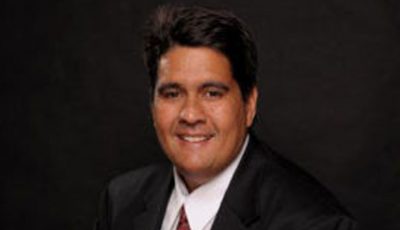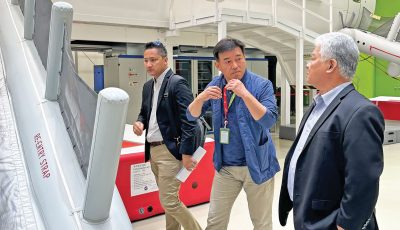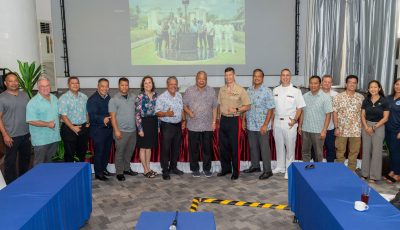Security panel wants ‘military edge’ maintained in the Pacific
Says China missile threat ‘increasing’ with newly unveiled ‘extremely inaccurate’ missile
Staffers from a congressional panel reviewing U.S.-China security relations released a report this month raising alarm on China’s “increasing” capabilities to launch a yet-to-be-proven missile dubbed the “Guam killer.”
Guam is home to various military installations and is one of China’s “focal points” in developing its missile capability, according to a report from the U.S.-China Economic and Security Commission.
The report centers its alarm on the “surprise introduction” of China’s new road-mobile intermediate range ballistic missile, or IRBM, the “DF-26,” which is “reported to feature nuclear, conventional, and anti-ship variants and a range of 3,000 to 4,000 kilometers, or 1,800 to 2,500 miles.
This means that Saipan, some 135 miles north of Guam, the southernmost island in the Mariana Islands chain, would be within this missile’s purported range.
“This range could cover U.S. military installations in Guam, roughly 3,000 km (1,800 mile) from the Chinese mainland,” the report states.
However, the report later notes that, “remaining challenges and gaps” in China’s capabilities “indicate the level of risk is still low.” The DF-26 “likely will remain extremely inaccurate until China extends its precision strike capabilities,” the report said.
China could employ surface- and submarine-launched attacks, the report said, “but with a high risk of the bombers being detected and intercepted by U.S. aircraft and anti-aircraft systems.” “The DF-26 is still unproven, and China has yet to develop a sea-launched” missile capabilities, the report went on to say.
Still, the report concludes by suggesting that policymakers continuously monitor the “performance and sustainability” of U.S. regional force posture to makes sure the U.S. “maintain its military edge.”
CNMI concerned
The administration of Gov. Ralph DLG Torres, for its part, said that they also echo concerns raised by Guam Congresswoman Madeleine Bordallo on regional security threats, when sought for comment on the report.
“The administration agrees…that the continued diplomatic talks by President Obama and China’s President Xi Jinping can advance the economic opportunities between our countries rather than military threats,” said Office of the Governor spokesman Ivan Blanco.
“Furthermore, it is reassuring to know that PACOM (United States Pacific Command) continuously monitors known and unknown threats to U.S. soil in the Pacific.”
The commission report cites “Chinese writings” to suggest Guam, among others, are “focal points” for China’s developing capabilities.
“Guam is seen as a highly important feature in the purported U.S. containment strategy, with analysts noting its strategic position and its role as an ‘anchor’ of U.S. forces in the region and of the second island chain in particular,” the commission said, listing Taiwan and Japan as other places of strategic interest.
The report notes that the U.S. plans to enhance its military presence in Guam in the future” as part of the “Rebalance” in the Pacific and reducing dependency on foreign bases.
“The redeployment of 5,000 U.S. Marines to Guam to reduce the U.S. presence on Okinawa, long delayed, is now projected to begin in 2020. The importance of Guam to U.S. strategic interests and any potential war fighting operations in the Asia Pacific is thus growing, even as China’s ability to strike the island is increasing,” it said.
But the report also states that, “The inaccuracy of China’s IRBMs and vulnerability of its platforms that would be transiting to Guam indicate that the risk currently posed by China’s conventional regional strike capabilities to U.S. forces on Guam in a conflict would be low.”
“The primary concern would be the potential for China to fire massive numbers of DF-26 missiles China deploys as well as qualitative improvements to China’s precision strike capabilities, bomber fleet, in-air refueling capability, and submarine quieting technology, to monitor the risk going forward.”



























